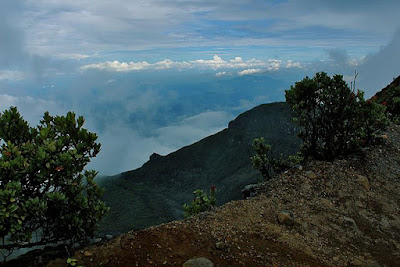THE FORT ROTTERDAM IN MAKASSAR
 |
| Image by By Sanko. - Own work, CC BY-SA 3.0 |
In the 16th century, the Dutch government rebuilt a Makssarese fort that was ruined in the war against the sultanate of Gowa. Having finished rebuilding the fort, they named it Fort Rotterdam.
Compared to the 17 forts surrounding the Makassar city that were built by the sultanate, Fort Rotterdam is the most magnificent. It has been well maintained and it is still in its original shape.
It’s very convenient to reach the location of the fort because it is in front of the harbor of Makassar city. It is around two kilometers from Losari beach. As it has the architectural style of the 16th century, it’s very easy to find it.
The wall of the fort is in black color and it’s approximately two meters thick. The wall looks great and sturdy. It is five meters high and the entrance door is small. If you have a bird’s eye view from a height, the fort looks like a turtle crawling to the beach.
The fort has a Portugal architectural style. It is a square-shaped building and it was built with the mixture of stones and clay. The wall of the fort was rebuilt with black solid rock in the reign of Sultan Gowa XIV.
During the Dutch occupation, troops under the command of admiral Cornels Janzoon Speelman declared war on Gowa sultanate in 1666. The fight was aimed to control the trade route of various spices as well as widening the territory of the Dutch government. Many parts of the fort were ruined by the severe attacks of the Dutch army.
The war took place more than a year. The Dutch troops succeeded in conquering the sultanate. Sultan Hasanuddin was forced to sign the Bongaya agreement on November, 18, 1667.
The broken fort was rebuilt by Governor-general Speelman in Dutch architectural style. One additional bastion was built on the west side of the square fort. Big cannons were installed on each of the five bastions.
The name of the fort was changed to Fort Rotterdam because Speelman was born in Rotterdam. In those days, Fort Rotterdam functioned as the trade center and the warehouse of agricultural products. It was also the headquarters of the Dutch government in the eastern part of the archipelago.
There’s nothing to be scared of while visiting this historical site. The old fort is used by the local authorities as the center of Makassarese culture. Many offices can be found at the old fort and it has a very clean environment.
After taking a look around there, the visitors can go to La Galigo museum to see the small room where prince Diponegoro was detained after being caught by the Dutch authorities on Java Island.
Prince Diponegoro was caught after a five year war that began from 1825 to 1830. The war ended as the prince was tricked by the Dutch authorities while attending the peace conference. Later, he was banished to Manado. In 1834, he was moved to Fort Rotterdam.
Besides Buginese culture, there are also the displays of the ancient scripts, Buddha statues, traditional clothes, the Buginese wedding dress, fishing equipment and the drawing of Ir. Sukarno the proclaimer.
It can help the visitors to learn a part of the Indonesian history in the era of Dutch occupation. Moreover, the panorama and the beauty of the building are also very attractive.
Richard K, a tourist from Germany, said that the bastions attracted his attention so much while visiting the old fort.



Comments
Post a Comment